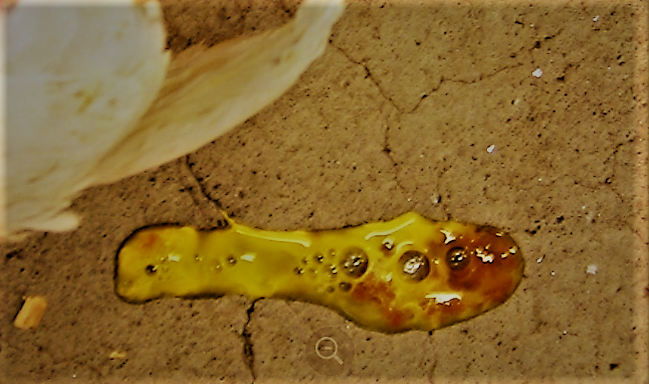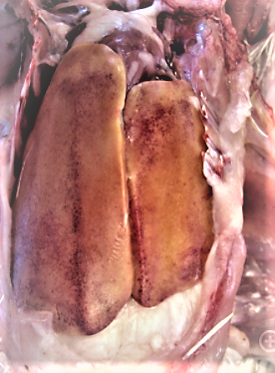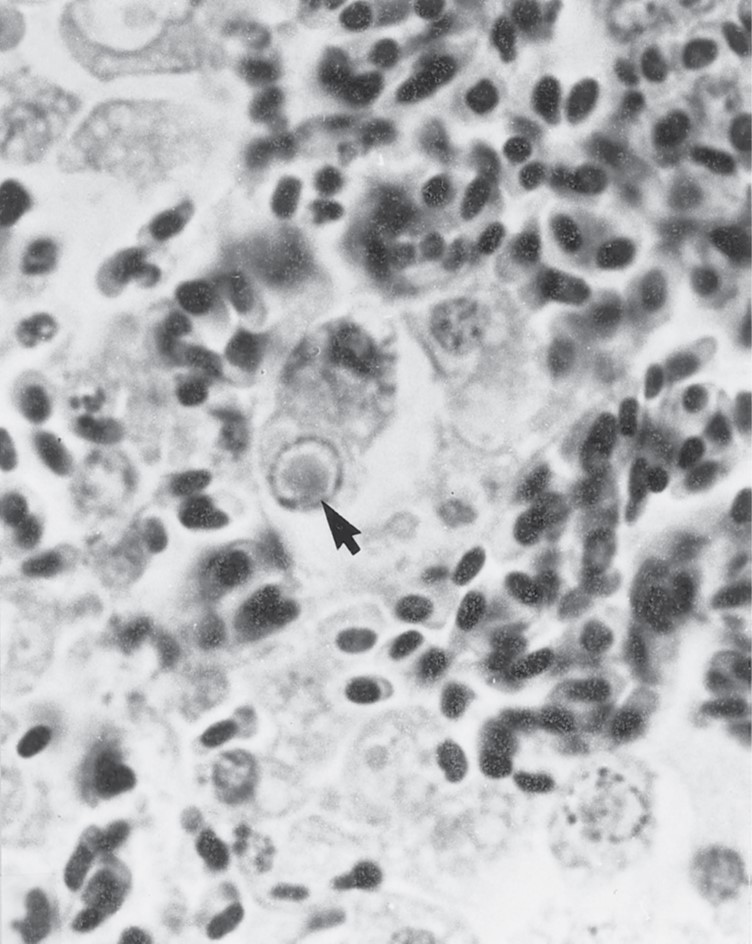Inclusion body hepatitis (IBH) is a disease of young broilers & breeders caused by fowl adenoviruses. Inclusion body hepatitis is an acute infection of chickens characterized by hepatitis, aplastic anemia, hemorrhages, mild respiratory disease, and a decrease in egg production. The disease was first described in the USA in 1963. IBH occurs in all areas where commercial chickens are reared. Clinically, hydropericardium syndrome appears to be a variant of IBH in poultry. During IBH infection, a sudden increase in mortality and non-specific clinical signs are observed. Haemorrhagic, pale foci, and swollen liver are found as gross lesions. For confirmative diagnosis, help is taken from histopathology and PCR. Due to the viral nature of the disease, there is no specific treatment.
Etiology & Transmission
- Fowl adenoviruses (FAdV) in chickens are the etiologic agents of this important disease.
- If birds have been infected with immunosuppressive viruses, the clinical disease becomes evident. (clinical signs of infection are not evident in mature birds, but they begin to show antibodies in their blood).
- These adenoviruses are resistant to high temperatures (even 56 degree Celsius) and disinfectants like ether, and chloroform.
- IBH in poultry is characterized by sudden onset of mortality peaking after 3–4 days and usually stopping on day 5 but occasionally continuing for 2–3 weeks.
- All adenoviruses are potentially transmitted by the vertical route. Egg transmission is an important factor to consider.
- Horizontal transmission from bird to bird by contact with droppings and contaminated personnel, equipment and housing.
- IBH in chicken has a course of 9- 15 days with a morbidity of 1-10% and a mortality of 1-10%. Infected birds remain carriers for a few weeks.
Clinical findings of inclusion body hepatitis
- Depression.
- Inappetence.
- Ruffled feathers.
- chalky gray white to bright greenish-Yellow, mucoid droppings due to excess bile acids

- Severe anaemia (pale comb and wattles)
- Yellow comb and wattles may be seen in some birds (jaundice).
Postmortem lesions of inclusion body hepatitis
- Liver swollen, yellow, mottled with petechiae and ecchymosis.

- Kidneys are swollen, pale, and may show nephrosis.
- Aplastic anaemia 1. Blood pale thin. 2. Bone marrow pink to white-yellow.
- Bursa of fabricius and spleen may be small (atrophic).
- Lungs are edematous
- Punctate and ecchymotic hemorrhages on skin, breast and thigh muscles and intestines and other viscera.
- Microscopically – basophilic intranuclear inclusions are found in hepatocytes.

- Tentative diagnosis: mortality pattern and gross lesions
- Definitive diagnosis: histopathology or PCR
- The diagnosis is confirmed by microscopic examination of the affected tissues and detection of typical lesions, especially intranuclear inclusion bodies or by PCR.
- This liver shows acute necrosis of the hepatocytes and several basophilic intranuclear inclusion bodies.
Differential Diagnosis
Liver lesion resembles
1. Mycotoxicosis : Analyze feed for mycotoxins.
2. Histomoniasis : Check for parasite in impression smears or tissue sections of liver.
3. Deficiency of vitamin B12
4. Fatty Liver Syndrome
Intestinal haemorrahges are similar to those seen in coccidiosis
1. check for schizonts and oocysts in mucosal scrappings
2. Aplastic anemia is not associated with coccidiosis.
Prevention and control of IBH
- Follow appropriate biosecurity procedures and good sanitary precautions
- Ensure the prevention of immunosuppression causing diseases, Effective control of IBD (infectious bursal disease) has contributed to a decline in the severity of IBH.
- Formalin inactivated oil adjuvant vaccines are reported to be highly effective in areas where the condition is endemic.
Treatment of inclusion body hepatitis
No specific treatment available. Antibiotics along with supportive therapy should be offered to avoid secondary bacterial infections.
How to counter an outbreak
- Administration of autogenous vaccines helps to reduce the losses.
- Feed restriction or diet having low-protein and low-energy is offered to birds to reduce metabolic pressure on liver.
- Soluble vitamins are recommended to help and support the bird in diseased condition.


